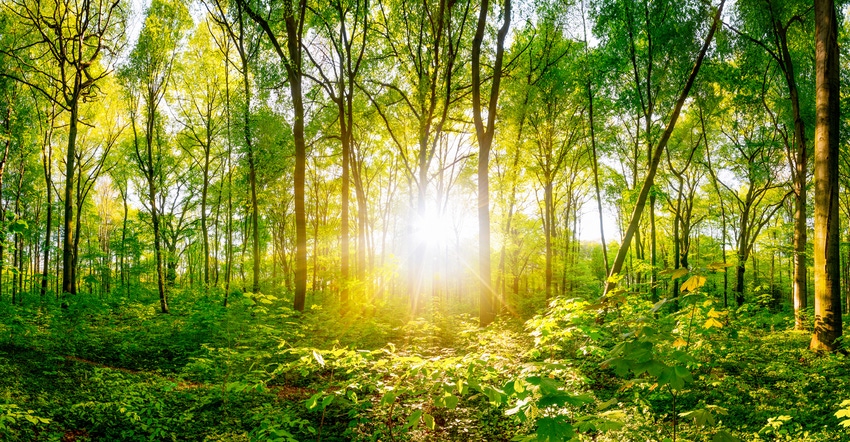October 9, 2020

What is TSI? Timber stand improvement is a way of removing certain undesirable tree species to improve the growing conditions while eliminating competition for more desirable species.
First, ask yourself: What are your immediate and long-term goals for your woodlands or forested lands? Is it timber production, wildlife habitat, conservation, soil erosion mitigation, recreation or a combination of these? Your long-term goals will be important in implementing your TSI program.
The second step is to identify your target trees. Target trees may include crop trees, which are desirable and have high lumber value, such as oaks, hickories and walnuts. Target trees may also offer nuts or mast for wildlife.
Some tree species may be desirable or undesirable. For example, sugar maple may provide a source of maple syrup but holds little wildlife value. And as an understory tree, it will shade out seedling regeneration of high-value trees like oaks.
Undesirable target trees are species that need to be removed and may include hollow trees and trees with poor form. However, if wildlife habitat is one of your management goals, then hollow trees can be a home for cavity nesting birds and other animals.
Tree form is also important. A high-value tree species with poor form may not be suitable for forest products, but on the other hand, it may be an important source of wildlife food. Additionally, trees that are declining or have poor form can be breeding habitat for wood-boring insects and bark beetles that can spread to your healthy, desirable trees.
If you are thinking about firewood, some of these species can provide an additional source of income if you are not too picky about the quality and tree species.
Location, location, location
As with real estate, location applies with forest management. In upland locations, it is important to remove invasive species such as Osage orange (or hedge), black locust and honey locust. Other trees species that are not as valuable but could be harvested for lumber include maple, elm, hackberry and ash. For bottomlands, some of the aforementioned trees may be present, but oaks and walnuts should take priority as a crop tree.
Here’s what you should know before harvesting anything:
1. Work with a consulting forester to manage your timber sale.
2. Don’t remove more than a third of the trees in an area in any given year. Removing too many trees will change the wind pattern and intensity, which is tough on the trees on the edge of the stand. Plus, over-thinning can lead to sprouts on trunks, which decreases a tree’s value.
3. Remove all invasive species before starting TSI operations. Invasive species thrive on disturbance, so if you remove trees before dealing with invasive plants, you will provide an ideal situation for them to spread and potentially explode. Remove invasives with a variety of methods, including cut stump, basal bark spraying, girdling and prescribed burning. Each management method has pros and cons, and a combination may be required to get the desired result.
Miller is a horticulture professor at Joliet Junior College in Joliet, Ill., and a senior research scientist in entomology at The Morton Arboretum in Lisle, Ill. Email your tree questions to him at [email protected]. The opinions of this writer are not necessarily those of Farm Progress/Informa.
About the Author(s)
You May Also Like




